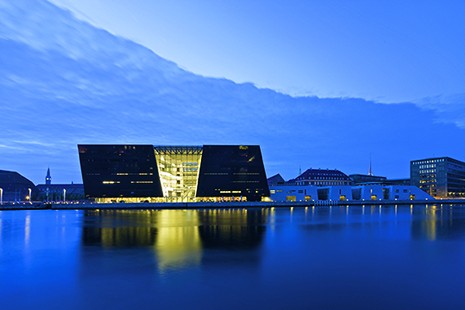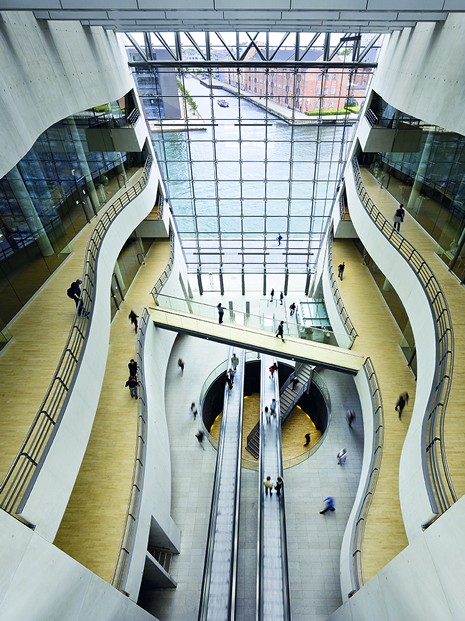Description
More than a decade after its inauguration in 1999, the Danish Royal Library, universally known as the “Black Diamond”, remains a significant landmark in Copenhagen, both as a public library and a part of the city waterfront. The work of the Danish firm Schmidt Hammer Lassen, the Black Diamond was the winning entry to an international competition in 1993. The competition, a product of several different governments, requested proposals for both the location and the design of an extension to the Royal Library on the Slotsholmen waterfront. There were long-standing issues of insufficient space and storage, already a problem in the 1906 Holm Library in the Danish Parliament and Archives complex. These issues were not resolved by the 1968 Preben Hansen refurbishment, an extension ill received for its concealment of the brick facade of the original building. The proposal by Schmidt Hammer Lassen was selected for its creation of “a new building that appears as an independent work of architecture which through its masterly connection with the library, both separates itself from it while at the same time giving it prominence.”
Addressing civic and urban issues through a new presence on the waterfront, one salient aspect of the Black Diamond project is the integration of the old library with the new building across the four-lane Christians Brygge Road. This process was initiated by the recognition of the formal procession on the east-west axis that begins in the historic library courtyard. This axis, on which the existing Holms entrance is located, becomes the primary axis of the new building. It culminates in a grand atrium with a spectacular view of the water through an enormous glass structure piercing the black mass of the library. On the exterior, the extension of the new vocabulary of black granite and glass to the facades of the Hansen addition across the Christians Brygge Road further unites the old and the new buildings. This gesture is enhanced by the assimilation of the thoroughfare through the addition of three glass bridges, high above the road, that connect the two buildings. Vehicles seemingly drive through the library complex.
The entrance of the new library on the south facade establishes a new north-south axis paralleling the waterfront. This sequence comprises a series of public and civic spaces that include a restaurant, a café, a bookstore, public restrooms, an exhibition gallery, an auditorium and the atrium/entrance to the library itself. This new axis intersects the east-west axis at the atrium and concludes on the north side in a low white building, nicknamed the “Fish”, which houses four related research institutions.
A set of travelators moving in the east-west axis from the atrium lead to the formal entrance of the stacks and reading rooms on the third floor. These steeply inclined people movers create a ribbon around which the new library spaces are organized in curved, wavy forms. This light interior of organic shapes is in contrast to the orthogonal arrangement of the old library and the hard geometry of the external, black graniteclad form.
The simple geometric form of the library belies its structural complexity. Due to its proximity to the waterfront, the concrete column and deck system are set on a double foundation and are fixed by steel anchors to the limestone stratum 12 m underground. Four concrete towers containing stairs and core elements serve as horizontal bracing on the interior. The floating facade, in some instances hovering above the ground and inclined outwards, is cantilevered and requires a hung cable-stayed construction.
The library is most notable for its prescient awareness, in 1993, of the need to integrate new media in the library of the future. In providing a landmark that not only houses books but sets out to address new values that include the accommodation of different forms of media and cultural activities, the Black Diamond remains of great relevance in the design of libraries today.
Drawings
Ground floor plus surroundings
Third floor
South elevation
West elevation
Photos

View towards the waterfront of the “Black Diamond” and the “Fish”

View of atrium and travelators with the harbor beyond
Originally published in: Nolan Lushington, Wolfgang Rudorf, Liliane Wong, Libraries: A Design Manual, Birkhäuser, 2016.